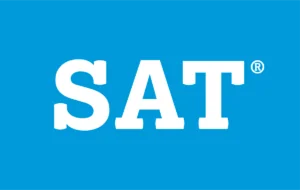In the wake of the Supreme Court’s decision in the Students for Fair Admissions case, which banned affirmative action, Inside Higher Ed reports that selective institutions have been actively considering alternatives to maintain racial diversity.

✅ AI Essay Writer ✅ AI Detector ✅ Plagchecker ✅ Paraphraser
✅ Summarizer ✅ Citation Generator
Key Takeaways
- Implementing class-based affirmative action, while preserving racial diversity, is both less efficient and extremely costly.
- While many support class-based affirmative action philosophically, the financial demands to support low-income students adequately are overwhelming, with the current financial aid system already strained.
- Selective colleges face a dilemma in balancing their educational missions with the financial implications of class-based affirmative action. Despite the potential for increased diversity, the financial burden poses a significant challenge. One such alternative is class-based affirmative action.
The class-based affirmative action in higher education is a complex issue. Advocates argue that this approach, by focusing on lower-income students who are often Black and brown, could mitigate the ruling’s impact on racial diversity and address socioeconomic disparities.
However, a recent study by the Brookings Institution reveals a sobering reality. While maintaining pre-SFFA levels of diversity is theoretically possible with socioeconomic preferences, it is “considerably less efficient” and would require a substantial increase in financial aid budgets. As Phillip Levine, an economics professor at Wellesley College and study author, notes,
“It’s difficult not to support this philosophically…But this is a resource issue.”

The Cost and Value Debate
The core of the debate lies in whether the high cost of class-based affirmative action is justified. Richard Kahlenberg, a nonresident scholar at Georgetown University, criticizes selective colleges for their reluctance to invest more in low-income students, stating,
“The dirty secret about selective colleges is that they can get even more diversity without affirmative action…It’s just more expensive.”
Conversely, Catharine Bond Hill, former president of Vassar College, reflects on her experience with financial challenges and the competitive nature of higher education. The fear that investing heavily in financial aid might compromise other aspects like hiring top faculty or enhancing facilities often prevails.
A Call for Public Funding and Collective Action
Levine argues that the responsibility of funding should not solely rest on educational institutions. He suggests that public entities, like state and federal governments, should play a more significant role, possibly through tax subsidies or expanded student aid grants. Hill also mentions the “prisoner’s dilemma” faced by colleges, where individual commitments to financial aid are hindered by competitive pressures. This collective challenge requires a unified approach among institutions.
Is Such an Inefficient Approach Necassary?
Despite the inefficiencies and costs, the Brookings study suggests that class-based affirmative action could be more effective than other race-neutral alternatives, like prioritizing first-generation students. However, the correlation between income and race is not perfect, making this approach less targeted than race-conscious admissions.
Levine and Hill both emphasize the broader issue of socioeconomic access in higher education, extending beyond elite institutions. As they see it, while the most selective colleges have the resources to make significant changes, a broader commitment across the education sector is necessary for meaningful progress.
Kahlenberg concludes by framing the concept of class-based affirmative action as not just an alternative to race-conscious admissions but as a critical step towards bridging the gap between the ideals and realities of American higher education. This moment, he believes, calls for a bold commitment from higher education institutions.
Follow us on Reddit for more insights and updates.





Comments (0)
Welcome to A*Help comments!
We’re all about debate and discussion at A*Help.
We value the diverse opinions of users, so you may find points of view that you don’t agree with. And that’s cool. However, there are certain things we’re not OK with: attempts to manipulate our data in any way, for example, or the posting of discriminative, offensive, hateful, or disparaging material.